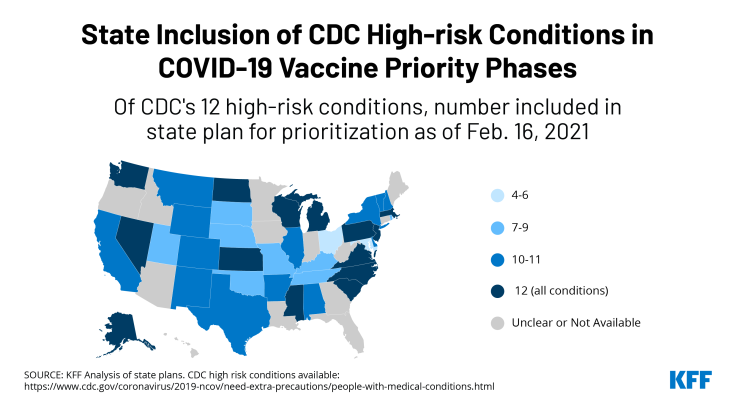37 States Explicitly Outline What Conditions are Considered “High-Risk” for Vaccine Prioritization
Individuals with certain medical conditions are at increased risk of severe illness if they become infected with SARS-CoV-2, the virus that causes COVID-19, and as such are recommended by the Centers for Disease Control and Prevention (CDC) for vaccination in the first phases of vaccine roll-out. Most states have not yet opened up vaccine eligibility to those with high-risk medical conditions, although they represent some of the next in line.
A recent KFF analysis assessed how states are defining “high-risk medical conditions,” including whether they follow CDC’s recommendations or deviate in some way. This point in time analysis reflects information available as of February 16, 2021. Overall, there is wide variation across the country, including in the conditions listed by states, whether these are limited or allow for additional conditions to be considered, and how clearly the information is presented.
Among the 50 states and DC, 37 have provided explicit information on what conditions they consider “high risk” (Figure 1):
- 14 include all twelve of the conditions on CDC’s list.
- Almost all include the following conditions: cancer (35), chronic kidney disease (34), COPD (37), heart conditions (35), immunocompromised due to solid organ transplant (36), sickle cell disease (35), and Type 2 diabetes (34).
- There is less consistent inclusion of other conditions: severe obesity (32 states), obesity (29), Down Syndrome (32), pregnancy (27), and smoking (16).
Given the challenges and confusion with vaccine roll-out thus far, this variation and lack of clarity could have significant bearing on the ability of those with high-risk medical conditions, some of whom may be among the most vulnerable, to access the vaccine in early phases.

